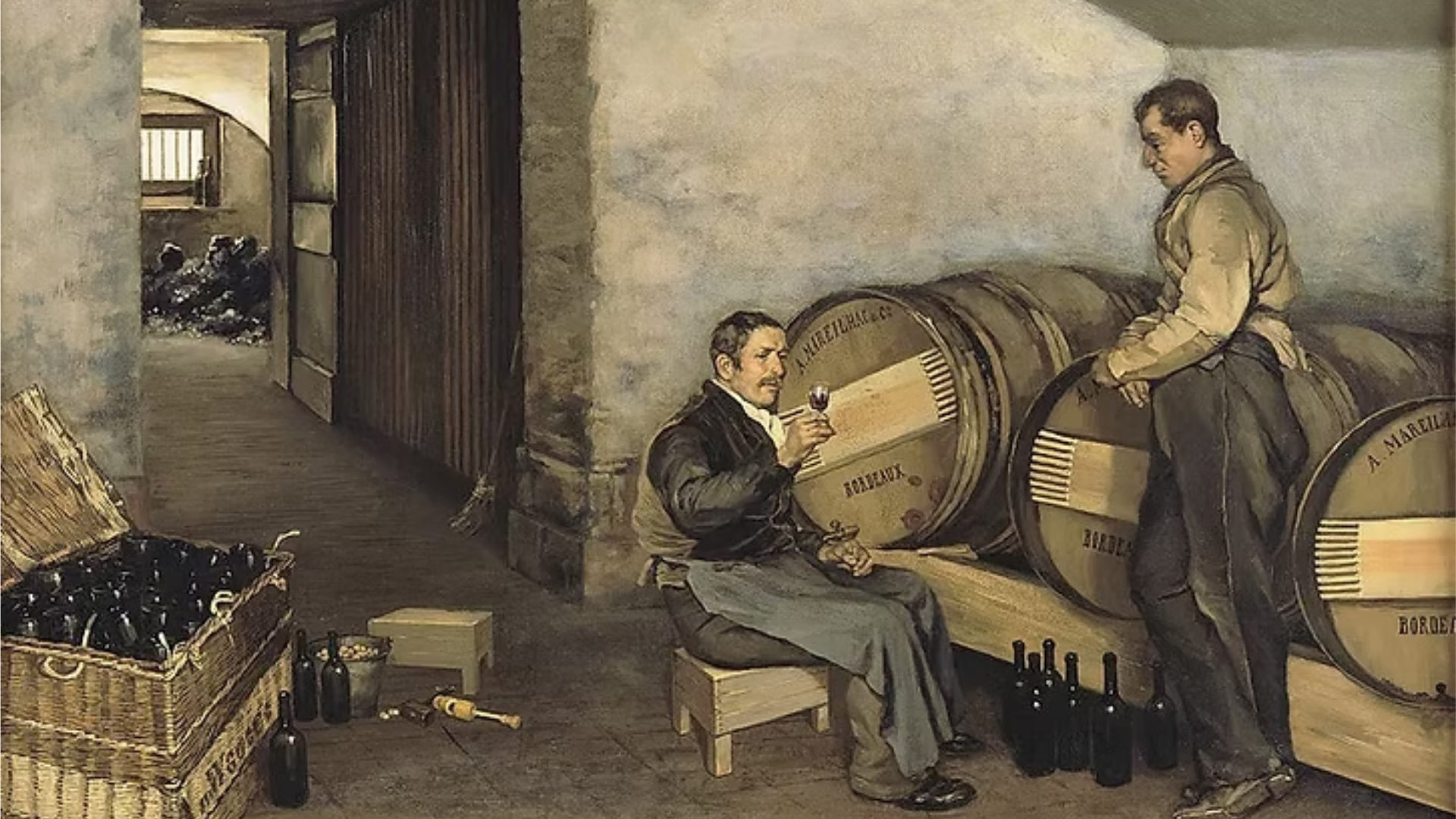The Rich History of Wine in France
“Vue de la Nouvelle Halle aux Vins” (Archive)
The Grand Tale of French Wine
In a land shaped by wind and sun, rivers and prayer, there was an elixir born from the heart of the earth and the hands of humankind: wine.
But this was no ordinary drink. It was a secret language, a song of the seasons, a mirror of the French soul.
So begins the epic saga of French wine, a journey spanning over two thousand years, where vines became the roots of a civilization and grapes the emblems of an art de vivre.
Chapter I: The First Vines, Greeks and Romans
In the misty shadows of the 6th century BCE, Greek settlers landed on the southern shores of Gaul, near what is now Marseille. In their hands, they carried cuttings of vine, and in their hearts, a dream of new life in fertile lands. They planted. They prayed. The vine took hold.
Then came the Romans, builders, conquerors, visionaries. Along their stone-laid roads, they spread vines like a living tapestry, weaving them across the Rhône Valley, Languedoc, Loire, and Champagne.
Wine became more than drink: it was a tool of Romanization, a cultural compass, and a commercial bond that bound Gaul to the beating heart of Empire.
Chapter II: Monks, Bells, and Barrels, The Middle Ages
When darkness fell across medieval Europe, it was the monks who lit the path. In quiet monasteries, Cluny, Cîteaux, Saint-Benoît, men in robes tended vines as they did souls.
They observed the earth, studied the stars, and classified vineyards with reverence. Wine became sacred knowledge. Monastic care turned the vine into a divine science.
Meanwhile, trade blossomed. After the marriage of Eleanor of Aquitaine to England’s Henry II, Bordeaux wines sailed to English shores, while the Loire and Champagne filled goblets in royal courts.
Chapter III: Nobility and Sparkles, Renaissance to Revolution
In the 16th and 17th centuries, a magical word emerged: “cru.” Wine was no longer just wine, it was ranked, revered, refined. A symbol of taste, wealth, and status.
In the cellars of Hautvillers, a monk named Dom Pérignon trapped starlight in a bottle. Thus was born Champagne, a wine that would one day dance at coronations, weddings, and celebrations the world over.
Wine, like poetry, became a matter of prestige, a language spoken by kings and philosophers alike.
Chapter IV: Blight, Science, and Salvation, The 19th Century
But no tale is without its dragons.
In 1863, a silent invader arrived: phylloxera, a tiny louse that devoured the roots of nearly every vine in France. Vineyards withered. Families despaired.
Then, science answered the call. Louis Pasteur, a modern-day alchemist, unlocked the mysteries of fermentation. With grafting and experimentation, the vines were slowly reborn.
Out of crisis emerged a vow: the Appellation d’Origine Contrôlée (AOC) system, a national promise to protect terroir, quality, and identity.
Chapter V: The Living Map, France’s Wine Regions
Each region in France is a realm of its own, a tale etched in soil, shaped by sun and rain, and told through the bottle.
Bordeaux, born of empire and Eleanor, flows with deep reds that age like ancient royalty.
Burgundy, sacred to monks, whispers the soul of Pinot Noir and Chardonnay, each plot, or climat, a fingerprint of terroir.
The Rhône Valley, where Romans once planted, pulses with Syrah in the north and bold blends in the south.
The Loire, the river of kings, offers a full symphony, lively reds, elegant whites, and golden sweets.
Alsace, protected by the Vosges, crafts precise, aromatic whites, rooted in both Roman and Germanic legacy.
Champagne, cold and chalky, fizzes with elegance, its bubbles born from faith, finesse, and fermentation.
Southwest France, rugged and wild, kept ancient grapes alive, Malbec, Tannat, Petit Manseng, offering wines as bold as its hills.
Provence and Corsica, kissed by the Mediterranean, sing of sun-soaked rosés, vibrant whites, and the whispers of ancient Greek vines.
Languedoc-Roussillon, once the bulk producer, is now a cradle of innovation, natural winemaking, and organic revival.
Chapter VI: Today, Between Heritage and Horizon
Now, the winds have shifted again.
Climate change, global markets, and environmental urgency challenge tradition. Yet, France’s winemakers adapt with grace. They are stewards of the past and architects of the future.
They rediscover forgotten varietals. They turn to biodynamics, low-intervention methods, and eco-conscious farming.
Today, French wine is a dialogue between centuries, a dance of memory and momentum.
Epilogue: A Nation in a Glass
The story of French wine is not just the story of a drink. It is the tale of a nation. A legacy of farmers, monks, nobles, rebels, and visionaries who believed that what grows from the earth can speak to the soul.
To sip French wine is to taste history, landscape, language, and love, a story poured into a glass, waiting to be told again and again.
Because in France, wine isn’t made, it is written.
Discover More
Sources:
Dion, R. (1959). Histoire de la vigne et du vin en France: des origines au XIXe siècle. Paris: Flammarion.
Unwin, T. (1991). Wine and the Vine: An Historical Geography of Viticulture and the Wine Trade. London: Routledge.
Lachiver, M. (1988). Vins, vignes et vignerons: Histoire du vignoble français. Paris: Fayard.
Brunet, R. (1986). “Le terroir: mythe et réalité.” Géographie et cultures, n°1.
Phillips, R. (2000). A Short History of Wine. London: HarperCollins.
Bisson, L.F. (2001). “History of Wine Production.” In: The Oxford Companion to Wine, 3rd ed., Oxford University Press.




